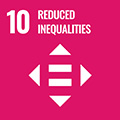- Docente: Rita Chiesa
- Credits: 2
- SSD: M-PSI/06
- Language: English
- Teaching Mode: Traditional lectures
- Campus: Cesena
- Corso: Second cycle degree programme (LM) in Work, Organizational and Personnel Psychology (cod. 5967)
-
from Oct 07, 2024 to Dec 09, 2024
Learning outcomes
Upon successfully completing the orientation course 2, the student will learn more about the current challenges in Work, Organization and Personnel Psychology and the deontological framework in these professional domains.
Course contents
- Introduction to EMJMD WOP-P
- Professional Organisations in WOP Psychology
- Scientist-Practitioner Model and Evidence-based practices
- Ethics and deontological issues
- European policies with WOP Psychology
- Fourth industrial revolution and WOP Psychology
- Sustainability and WOP Psychology
Readings/Bibliography
Ghislieri, C., Molino, M., & Cortese, C. G. (2018). Work and Organizational Psychology looks at the Fourth Industrial Revolution: How to support workers and organizations?. Frontiers in psychology, 9.
Murdoch-Kitt, K., Emans, D., and Oewel, B. (2020) Designing Six Dimensions of Intercultural Teamwork: A next-gen challenge in co-creation processes, in Boess, S., Cheung, M. and Cain, R. (eds.), Synergy - DRS International Conference 2020, 11-14 August, Held online. https://doi.org/10.21606/drs.2020.398
Lecture slides and materials/papers are provided during the course.
Teaching methods
Brief lectures, in-class exercises, case study, assignment of individual or small group tasks, scientific paper analysis.
Teaching materials will be uploaded on the e-learning platform. Students are strongly encouraged to consult these resources for an active learning. Students are expected to come to class prepared, on time, ready to discuss and ask questions and personally interested in learning.
Assessment methods
The final assignment (only one, valid for both modules) will be awarded the maximum number of points if: the assignment fully complies with the instructions; is structured with clear and logical sections; offers original and thoughtful insights; thoroughly develops the objective with well-argued arguments supported by specific, concrete, and appropriate details; shows student’s mastery of the main contents of both modules; is written entirely in Standard English and contains no significant errors in spelling, punctuation, or grammar; fully adheres to the conventions of academic prose; and references meet the standards of APA.
Style and format: maximum 2000 words, minimum 1500 words (including the title and maximum 10 references); Times New Roman 11, line spacing 1; APA style and language; minimum 1 table and 1 figure. The tables and figures should be numbered and have an effective title, and should be created using Excel, Word or other software (not copied and pasted).
Teaching tools
Computers can be used for note-taking only or for in-class activities. If computers are used for texting, e-mail, or Internet connection (without the explicit permission of the professor), the professor may revoke the privilege of using a computer in that class.
Office hours
See the website of Rita Chiesa
SDGs



This teaching activity contributes to the achievement of the Sustainable Development Goals of the UN 2030 Agenda.
